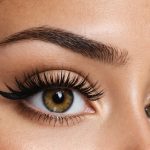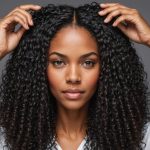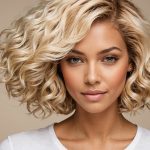Understanding Hair Breakage
Hair breakage often occurs when there’s damage to the structural layers of hair. This damage can be traced to several factors that compromise hair health, such as excessive styling, heat exposure, and chemical treatments. It’s crucial to understand these as they can contribute to different types of hair damage.
Let’s start with a brief overview of the hair structure. Each strand comprises three main layers: the cuticle, cortex, and medulla. The cuticle acts as a protective shield, while the cortex provides strength and elasticity. Damage typically initiates at the cuticle, eventually reaching the cortex if not mitigated.
Also to see : Ultimate guide for newbies: seamlessly achieve flawless false eyelash application
There are various types of hair damage. Mechanical damage, from excessive brushing or harsh hairstyles, weakens the cuticle. Chemical damage, stemming from hair dyes or relaxers, alters the internal bonds of the cortex. Heat damage from styling tools compromises both the cuticle and cortex by stripping essential moisture.
Common myths about hair breakage often mislead individuals; for instance, the belief that trimming hair stops breakage is incorrect. While trimming can eliminate split ends, it doesn’t address underlying hair health issues. Understanding genuine causes and impacts is key to maintaining optimal hair health.
This might interest you : Mastering at-home hair bleaching: essential tips for safe and damage-free results!
Essential Tactics for Prevention
To maintain your hair in its best condition, integrating effective hair protection measures is crucial. Start with a focus on hydration and moisture balance; keeping hair hydrated will prevent breakage. Dryness makes hair more prone to damage, so use hydrating shampoos and conditioners regularly.
Protective hairstyles are another excellent tactic. Styles such as braids or buns reduce tension and minimise exposure to environmental harm. These hairstyles help lock in moisture, safeguarding the strands from excessive manipulation.
Daily hair care routines also play an essential role. Gently detangle your hair using a wide-tooth comb, and avoid brushing while wet. Regular trims can prevent split ends from escalating into further hair damage. Tailor these preventative measures to your specific hair type for optimal results.
Incorporate these preventative measures into your hair care routine to promote strong, resilient hair. Not only can these practices prevent existing breakage from worsening, but they also foster an environment for your hair to thrive. Remember, nurturing your strands with care and consistency can make all the difference in achieving healthy hair.
Healing and Repairing Hair Breakage
Repairing hair breakage requires a blend of effective hair repair treatments and carefully selected restorative products. Key ingredients to seek include keratin, biotin, and natural oils like argan or coconut oil. These ingredients strengthen the hair shaft, replenish lost moisture, and improve elasticity, mitigating damage over time.
When it comes to recommended products, leave-in conditioners, restorative masks, and protein treatments shine. They work by deeply penetrating the hair’s cortex, repairing and fortifying it from within. Look for products that have a reputation for targeting breakage while promoting overall hair health.
Additionally, consider DIY treatments which offer natural avenues for hair rehabilitation. For instance, a simple mask made with egg yolk, honey, and olive oil can provide essential proteins and nutrients. Regular application of such treatments can significantly enhance hair resilience.
Utilising a consistent combination of commercial and DIY remedies empowers you to tackle breakage effectively and nurture healthier, more robust hair. Always tailor treatments to your specific needs, considering your hair type and damage level to yield the best possible results.
Nutritional Support for Hair Health
Diet for hair growth plays a pivotal role in maintaining hair strength and growth. Your hair needs a combination of vital nutrients to thrive. Without them, hair may become dull, dry, or brittle. Essential vitamins for hair health include Vitamin A, which promotes sebum production to keep the scalp healthy, and Vitamin C, for collagen synthesis and absorption of iron, an important mineral for hair structure. Additionally, biotin and Vitamin E support healthier hair growth by boosting keratin production and preventing oxidative stress, respectively.
Incorporating specific foods into your diet can greatly improve hair vitality. Eating fish rich in omega-3 fatty acids, like salmon, promotes scalp health. Leafy greens such as spinach provide iron and vitamins A and C. Nuts and seeds offer a healthy dose of Vitamin E. Remember, a balanced nutritional support for hair health can make a noticeable difference.
By prioritising a diet that supports hair health, you equip your body with the nutrients needed for robust hair growth and maintenance. Your hair will thank you.
Expert Tips and Best Practices
Learning from trichologists and hair care professionals can transform your understanding of optimal hair health. These experts often advise on the importance of using gentle shampoos and conditioning products that are sulfate-free to prevent unnecessary drying of the scalp and strands. They also recommend minimising the use of heating tools and, when necessary, employing heat protectant sprays to shield the hair from damage.
Common errors in hair care that professionals point out include over-washing, which can strip the hair of natural oils, and neglecting regular conditioning, which is essential for maintaining moisture. Adjusting your routine to address these missteps is key to healthier hair.
Experts emphasise a balanced diet as crucial for strong, vibrant hair. Ensuring adequate intake of biotin, iron, and omega-3 fatty acids can support hair growth and resilience. Professional advice also suggests occasional scalp massages to boost blood circulation, promoting nutrient delivery to hair follicles.
Avoiding harsh chemical treatments without adequate nourishment is also vital. By implementing these expert recommendations and fostering healthy practices, you can significantly improve your hair’s condition and longevity.
User Testimonials and Success Stories
Real-life experiences can be powerful motivators in the journey to overcome hair breakage. Users often share their successes with simple yet transformative hair care routines. One testimonial highlights the impact of integrating protective hairstyles; an individual reported reduced breakage after consistently wearing braids or buns, which minimized tension and exposure to harmful elements.
Another user emphasizes the effectiveness of restorative products, such as keratin-infused treatments, that significantly improved their hair’s strength and elasticity. This person’s experience underscores the benefits of targeting the inner hair structure for long-lasting health.
Individuals also tout the advantages of embracing DIY treatments, like homemade masks using natural ingredients. A variety of users relate how such treatments, applied regularly, have aided in reducing damage and enhancing overall hair resilience.
These testimonials not only showcase diverse approached but provide tangible tactics others can adopt. The shared journey of hardship and triumph in maintaining healthy and resilient hair inspires many to forge a path towards recovery with fewer frustrations.
Additional Resources
Gaining deeper insights into maintaining healthy hair can be achieved through a wealth of expert articles and resources. These materials can provide guidance on combating hair breakage and improving overall hair health.
Visual learners may benefit from suggested infographics and videos that illustrate effective hair care routines and the mechanics of hair damage and recovery. These visuals often simplify complex processes, making them easy to understand and apply.
For those who prefer reading, explore books that delve into types of hair damage and their prevention. Titles by experienced trichologists offer invaluable advice and professional insights on maintaining optimal hair health.
Online communities and forums also serve as excellent platforms for support and advice. These spaces allow for sharing personal experiences, which can be immensely helpful in discovering practical hair care tips and solutions used by others facing similar hair challenges.
These hair care guides and resources not only supplement your understanding but also empower you to make informed decisions. Engaging with these materials can enrich your hair care journey, offering new perspectives and innovative strategies.











